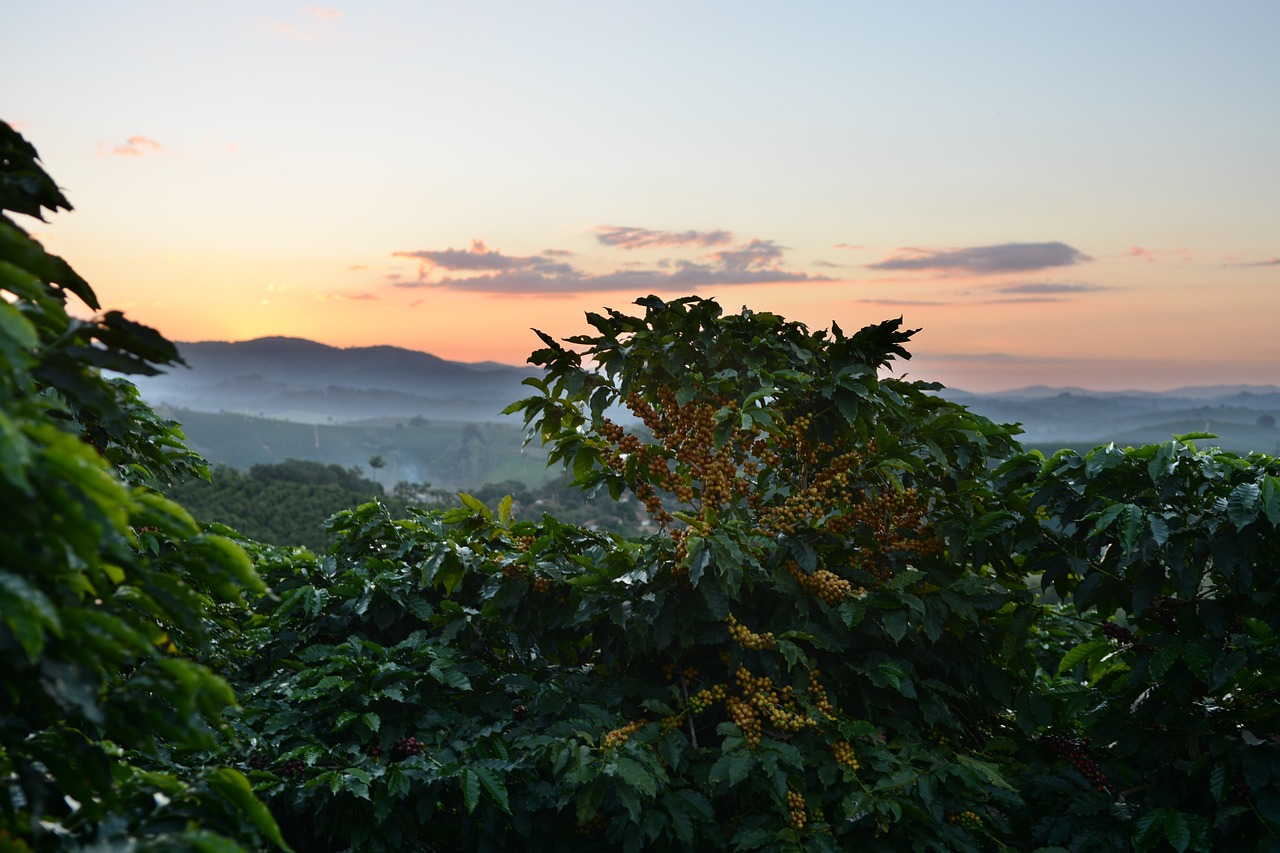Rain Forecasts for Brazil Spark Long Liquidation in Coffee

December arabica coffee (KCZ25) on Tuesday closed down -8.30 (-1.99%), and November ICE robusta coffee (RMX25) closed down -61 (-1.26%).
Coffee prices gave up an early advance on Tuesday and sold off after updated weather forecasts called for showers in Brazil's coffee-growing regions toward the end of the week, which sparked long liquidation in coffee futures.
On Tuesday, coffee prices initially moved higher, with Dec arabica posting a contract high and nearest-futures (U25) arabica posting a 7-month high and robusta climbing to a 3-week high. Coffee prices rose due to a lack of rain in Brazil's coffee-growing regions ahead of the critical flowering period for coffee trees. Somar Meteorologia reported Monday that Brazil's largest arabica coffee-growing area, Minas Gerais, received no rain during the week ended September 13.
Coffee prices also garnered early support Tuesday after the National Oceanic and Atmospheric Administration put the chance of a La Niña weather system in the southern hemisphere from October to December at 71%, which could bring excessive dry weather to Brazil and hurt the 2026/27 coffee crop. Brazil is the world's largest arabica coffee producer.
Robusta coffee also came under pressure due to concerns about ample supplies. The Vietnam National Statistics Office reported last Monday that Vietnam's Jan-Aug 2025 coffee exports were up +7.8% y/y to 1.141 MMT. Vietnam is the world's largest robusta coffee producer.
Strength in the Brazilian real is also bullish for coffee prices as the real (^USDBRL) climbed to a 15-month high against the dollar on Tuesday. The stronger real discourages export sales from Brazil's coffee producers.
Concerns about tighter US coffee supplies due to tariffs are bullish for prices. American buyers are voiding new contracts for purchases of Brazilian coffee beans due to the 50% tariffs imposed on US imports from Brazil, thereby tightening US supplies, as about a third of America's unroasted coffee comes from Brazil.
Coffee prices also have support from tighter ICE coffee inventories. ICE-monitored arabica inventories fell to a 16-month low of 666,337 bags on Monday. ICE robusta coffee inventories fell to a 2-week low on Tuesday at 6,554 lots, just above the 7-week low of 6,552 lots from August 28.
Coffee prices found support after Conab, Brazil's crop forecasting agency, cut its Brazil 2025 arabica coffee crop estimate on September 4 by -4.9% to 35.2 million bags from a May forecast of 37.0 million bags. Conab also cut its total Brazil 2025 coffee production estimate by -0.9% to 55.2 million bags from a May estimate of 55.7 million bags.
News of reduced coffee exports is supportive for prices after the International Coffee Organization (ICO) on September 3 reported that global July coffee exports fell -1.6% y/y to 11.6 million bags, and cumulative Oct-Jul coffee exports fell -0.3% y/y at 115.615 million bags.
Harvest pressures in Brazil are bearish for coffee prices after Brazil's Cooxupe coffee co-op announced last Tuesday that the harvest among its members was 97% complete as of September 5. Cooxupe is Brazil's largest coffee cooperative and Brazil's largest exporter group. Separately, Safras & Mercado reported on August 22 that Brazil's overall 2025/26 coffee harvest was 99% complete as of August 20, ahead of the comparable level of 98% last year. The breakdown showed that 100% of the robusta harvest and 98% of the arabica harvest were complete as of August 20.
Reduced exports from Brazil are supporting prices. On August 6, Brazil's Trade Ministry reported that Brazil's July unroasted coffee exports fell -20.4% y/y to 161,000 MT. In related bullish news, exporter group Cecafe reported that Brazil's green coffee exports in July fell -28% y/y to 2.4 million bags. Cecafe reports that July arabica exports fell -21% y/y, while robusta exports plunged -49% y/y. Cecafe said Brazil's July coffee exports fell -28% to 2.7 million bags, and that coffee shipments during Jan-July fell -21% to 22.2 million bags.
Due to drought, Vietnam's coffee production in the 2023/24 crop year decreased by -20% y/y to 1.472 MMT, the smallest crop in four years. Also, Vietnam's General Statistics Office reported that 2024 Vietnam coffee exports fell by -17.1% y/y to 1.35 MMT. Additionally, the Vietnam Coffee and Cocoa Association reduced its 2024/25 Vietnam coffee production estimate to 26.5 million bags on March 12, down from a December estimate of 28 million bags.
The USDA's Foreign Agriculture Service (FAS) projected on June 25 that world coffee production in 2025/26 will increase by +2.5% y/y to a record 178.68 million bags, with a -1.7% decrease in arabica production to 97.022 million bags and a +7.9% increase in robusta production to 81.658 million bags. FAS forecasted that Brazil's 2025/26 coffee production will increase by +0.5% y/y to 65 million bags and that Vietnam's 2025/26 coffee output will rise by 6.9% y/y to a 4-year high of 31 million bags. FAS forecasts that 2025/26 ending stocks will climb by +4.9% to 22.819 million bags from 21.752 million bags in 2024/25. However, Volcafe is projecting a global 2025/26 arabica coffee deficit of -8.5 million bags, wider than the -5.5 million bag deficit for 2024/25 and the fifth consecutive year of deficits.
On the date of publication, Rich Asplund did not have (either directly or indirectly) positions in any of the securities mentioned in this article. All information and data in this article is solely for informational purposes. For more information please view the Barchart Disclosure Policy here.

